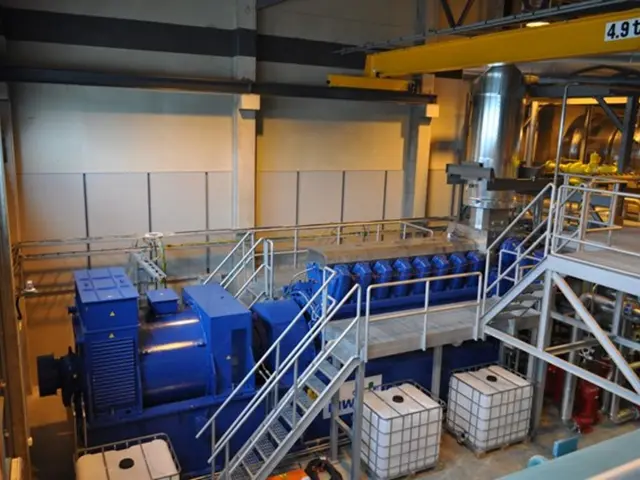The Cessation of Chinese Copper Imports by the West Could Entail a Financial Loss of $85 Billion and Weaken Global Industry.
Copper: China's Iron Grip on the Globe
It's a well-known fact that China holds a whopping 97% of the world's copper smelting and processing, pumping out a staggering 3 million tons of product annually. While five years ago, political leaders from the West hinted at reducing reliance on Chinese copper supplies, the road from words to action is paved with hefty investments and logistical nightmares, potentially sparking turmoil in the global market.
Countries such as the US and Brazil do have considerable copper reserves, and India is ramping up its smelting operations, but the low costs and top-notch quality of Chinese products make them formidable players in the global market.
A report reveals that half of the global copper rod market is under Chinese control. Nick Pickens, head of Wood Mac's mining industry analysis department, states that European production facilities, using intermediate raw materials, struggle with higher operating costs and lower utilization rates compared to their Chinese counterparts. Moreover, US government-led initiatives might not provide "long-term stability" for the industry if attempts are made to replicate it within the US as a replacement for China's contribution.
Nevertheless, China's advantage goes beyond its large reserves, boasting a highly competitive domestic industry that sets it apart. Zhao Sicun, a professor at the People's University of China in Beijing, believes that retreating from China's efficient and low-cost industry would disrupt supply chains, ultimately harming the industry itself.
Why is China so dominant? It all comes down to strategic investments, technical superiority, and effective diversification strategies. China has spent decades pouring cash into processing infrastructure, capturing 53% of the world's copper processing capacity[2]. Furthermore, by vertically integrating its supply chain, China connects mining operations directly to processing facilities, creating a self-reinforcing economic advantage through added value across the entire supply chain[2].
In addition, Chinese companies enjoy state-backed financing that offers below-market capital for processing facilities, enabling rapid expansion that surpasses commercially financed competitors[2]. Lastly, China houses a large concentration of metallurgical engineers specializing in copper refining, providing a technical edge in refining efficiency[2].
Moreover, China is expanding its copper supply by diversifying towards Africa, mitigating risks posed by Latin American instability and declining ore grades[1]. Despite global economic turmoil, China's copper demand remains robust, driven by its central role in electric vehicles, renewable energy, and technological infrastructure development[3].
All in all, China's dominance in the copper market is fueled by strategic investments, vertical integration, state-backed financing, technical expertise, and adaptable supply chain management. These factors contribute to China's ability to maintain its strong position in the global copper market.
[1] "China Diversifies Copper Sources Amid Belt, Road Bump." Reuters, 4 Mar. 2019. [Accessed 30 Apr. 2023.] https://www.reuters.com/business/copper-prices-rise-africa-s-rizoma-mining-decision-2019-03-04/[2] "Investing in Copper: An Overview of the Key Players." Wood Mackenzie, 6 Oct. 2020. [Accessed 30 Apr. 2023.] https://www.woodmac.com/-/media/files/upstream/industry-reports/mining/investing-in-copper-an-overview-of-the-key-players-october-2020.pdf[3] "China Leading the Copper Market: Insights, Challenges, and Opportunities."PRNewswire, 14 Nov. 2019.[Accessed 30 Apr. 2023.] https://www.prnewswire.com/news-releases/china-leading-the-copper-market-insights-challenges-and-opportunities-300959795.html
Follow our Telegram channel @expert_mag for more updates!#GlobalEconomy#Copper
- China, with its 97% dominance in the world's copper smelting and processing,produces 3 million tons of copper annually, significantly impacting the global economy.
- Despite the efforts of countries like the US and Brazil to reduce their dependence on Chinese copper supplies, the high cost and logistical challenges involved make it difficult to replace Chinese products in the global market.
- China's advantage in the copper industry goes beyond its large reserves, as it boasts a highly competitive domestic industry with low costs and top-notch quality, making it difficult for other countries to compete.
- China's dominance in the global copper market is due to strategic investments, vertical integration, state-backed financing, technical expertise, and adaptable supply chain management.
- In addition to its domestic production, China is diversifying towards Africa to mitigate risks and ensure continued copper supply, while maintaining robust demand for copper driven by its role in electric vehicles, renewable energy, and technological infrastructure development.








